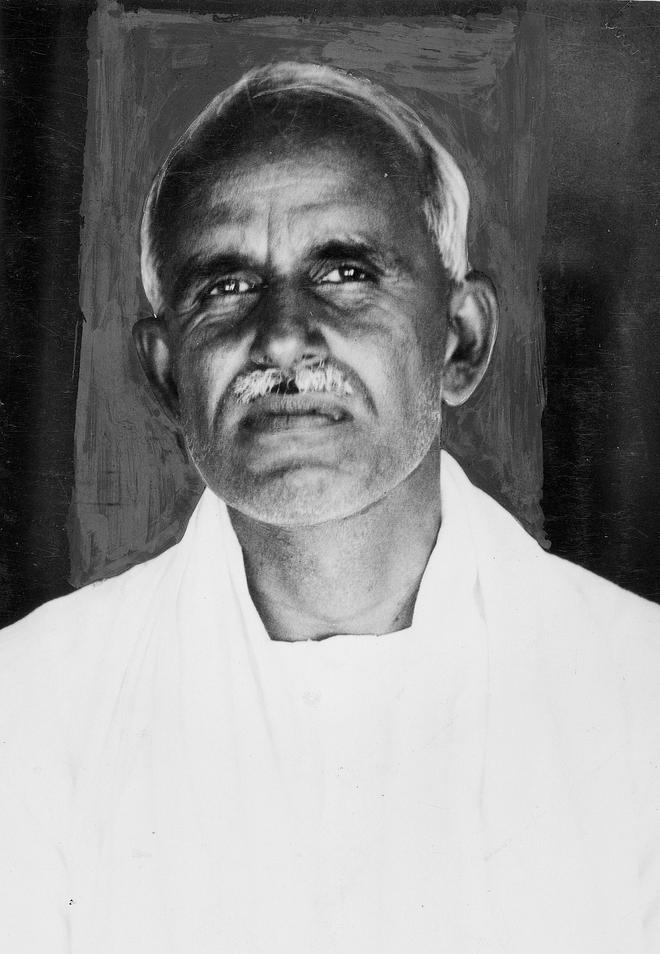
Intra-party tussles have a long history, both at the national level and in Tamil Nadu. It is well known that during the pre-Independence days, the working of the Tamil Nadu Congress Committee (TNCC) was characterised by two groups: one owing allegiance to C. Rajagopalachari, or Rajaji, and the other to S. Satyamurti initially and after his demise, his main follower K. Kamaraj. Also, the Rajaji-Kamaraj rivalry continued for over 30 years till they patched up their differences in 1971. What is less known is perhaps the first instance of the Premier of the Madras Presidency, Omandur P. Ramaswami Reddiar (1895-1970), taking away the Police portfolio from his Home Minister P. Subbaroyan (1889-1962), who himself was the Premier during 1926-30.
After Reddiar became the Premier in March 1947, it was a matter of time that he and Subbaroyan developed differences over several issues. Eight months later, a terse announcement was made by the government on November 17, 1947, that the subject of Police had been taken over by the Premier. According to ‘Kumaramangalam Thyaga Deepengal’, published by the Kongunadu Trust, the then Union Home Minister “Sardar” Vallabhbhai Patel took up the issue with the Premier. In his reply, Reddiar, who kept in mind a large influx of people from the erstwhile Hyderabad princely state to the Presidency, cited tension in the districts on the inter-State border following unrest in the neighbouring State. He explained that the forces belonging to the other State had been stationed in the border areas and people in the Presidency, who were on the other side of the border, were apprehensive that they would enter the Presidency anytime. It was against this backdrop that the change was effected, the book said (pages 306-307). However, Subbaroyan’s admirers interpreted the development as “a calculated slur” and he was reported to have given “an ultimatum” to Reddiar that if the subject was not restored to him, he would resign.
On November 25, this newspaper carried a brief item, stating that both the Premier and the Home Minister returned by a special plane to Chennai from New Delhi. The same day, the Congress Legislature Party (CLP) held a meeting at the Banqueting Hall (now Rajaji Hall) on the Government Estate (rechristened in the mid-1990s as the Omandurar Government Estate). “The meeting was scheduled to begin at 6 p.m., but long before that hour, members were seen discussing in groups the recent events in the Province. The taking over of the Police portfolio from Dr. P. Subbaroyan by the Premier, and the reported “protest” of Dr. Subbaroyan in the matter overshadowed even the Hyderabad situation, even in these discussions,” reported The Hindu on November 26, adding that the meeting was attended by Reddiar, Subbaroyan, and Kamaraj, the TNCC president. Following the mediation by Kamaraj and others, the subject was restored to the Home Minister on December 1, 1947.
Election of CLP leader
However, the peace did not last long. In January 1948, there was yet another election to the post of CLP leader. Subbaroyan, who was favoured by the Rajaji group (page 43, Kamaraj: A Study, V.K. Narasimhan, National Book Trust, India), lost. Reddiar, who had enjoyed the support of leaders such as Kamaraj, Neelam Sanjiva Reddy, and Kala Venkata Rao, was re-elected. On March 31 that year, the Home Minister tendered his resignation from the Reddiar Cabinet and had a “prolonged interview” with Governor Archibald Edward Nye. When journalists asked Subbaroyan about the reason for his decision, his advice was: “Keep patience till tomorrow.” After his resignation was accepted by the Premier, the former Minister launched a broadside against Reddiar, attributing his action to “his [Reddiar’s] interference in the administration of the subjects he had entrusted to me,” said a report of The Hindu on April 5.
But Reddiar strongly disputed the version of his former Cabinet colleague and contended that “in the interests of good government and as the Head of the Province, I have sometimes called Heads of Departments and other officers for consultation with a view to keeping in touch with what is happening and for the expeditious disposal of business. If any instructions are given to officers, they have been done only with the knowledge.”
Change of guard
A year later, there was a change of guard. Reddiar, known for his forthright temperament and often turning away people who went to him for favours, had quit and there was yet another election to the post of CLP leader. P. S. Kumaraswami Raja, who had the confidence of Kamaraj, was elected with 105 votes, while the other candidate, Subbaroyan, bagged 89 votes. However, the loser, for the next 12-odd years, had more active public life than many others. He was appointed the Ambassador to Indonesia in December 1949. He held the post till June 1951. After his defeat in the Lok Sabha poll in 1952, he briefly held the post of TNCC president. A couple of years later, he became a Rajya Sabha member. In 1957, the veteran leader romped home from the Tiruchengode constituency. Two years later, he was made the Union Minister for Transport and Communications. In his last six months, he held the post of Maharashtra Governor. But Reddiar spent his life quietly till his death in August 1970. He continued as a Member of the now-abolished Legislative Council till 1969. He had generally devoted his time to spreading the teachings of Ramalinga Adigal or Vallalar (1823-74), a Tamil poet-saint.







